By Jim Tanoos, with pictures and activities from annual study abroad visits to Munich, Prague, Hamburg, and Rotterdam by students from Purdue University in Indiana, USA
Before you begin this article, consider reading part one and two of Jims journey through Central Europe. He begins in Munich, Germany then heads to Prague, Czech Republic.
STOP 3 OF 4: HAMBURG, GERMANY
Train from Prague to Hamburg (490km): €29
One-day public transportation pass x 2 days: €21
Miniatur Wunderland daypass: €15
Click here for details on where to stay in Hamburg!
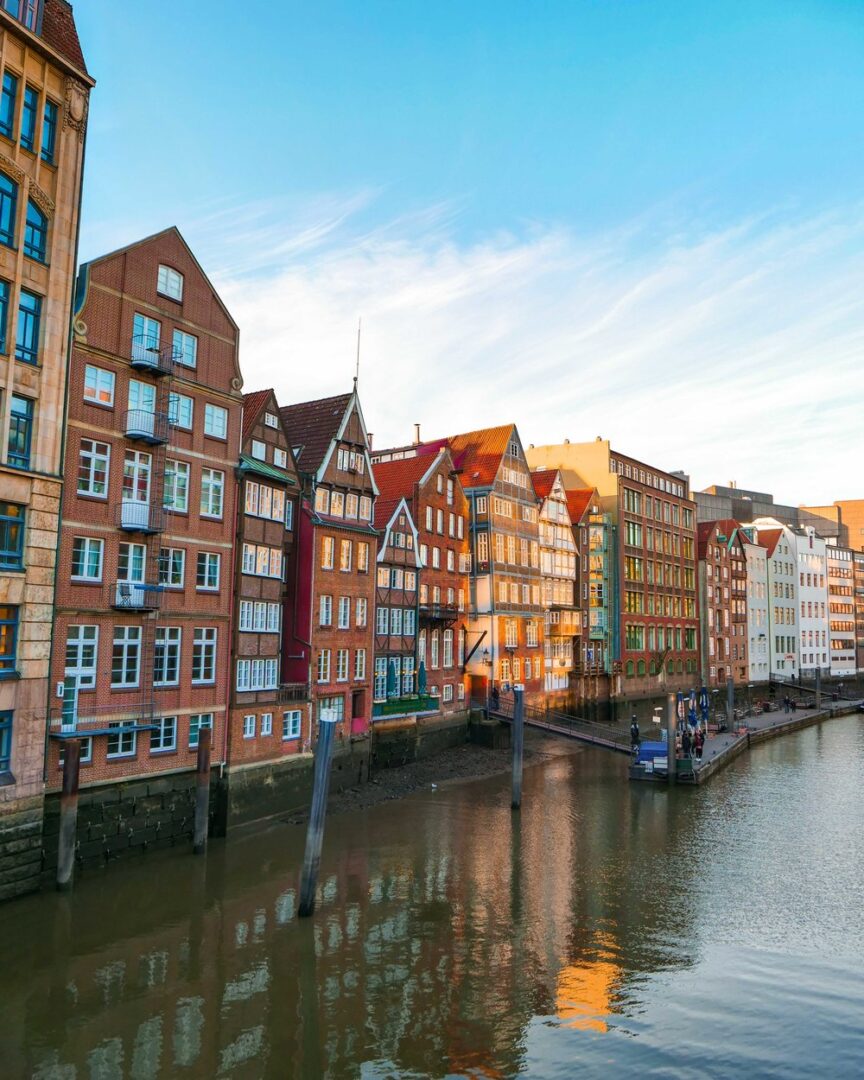
A BRIEF HISTORY OF HAMBURG
Hamburg is widely considered the most international of all German cities and has the highest percentage of international residents in Germany at 14% (LabourEconomics, 2019). It has a notable history in trade dating back to the Middle Ages and is credited with helping to bring the Germanic region out of the Middle Ages because of its access to both import and export markets. In 1410 Hamburg drafted a city constitution, known as “the first Rezeß”, which included dispute resolution policy and gave power of due process to citizens, a revolutionary civil liberty for the era.
The Hamburg U-Bahn, S-Bahn, and tram systems are among the most advanced public transportation systems in Europe. Due to successful taxi-union lobbying, Uber isn’t available in Hamburg, making public transportation especially important. Hamburg’s system is more technologically advanced, with screens inside the trains showing soccer scores and GPS-like maps of upcoming stops (see picture below).
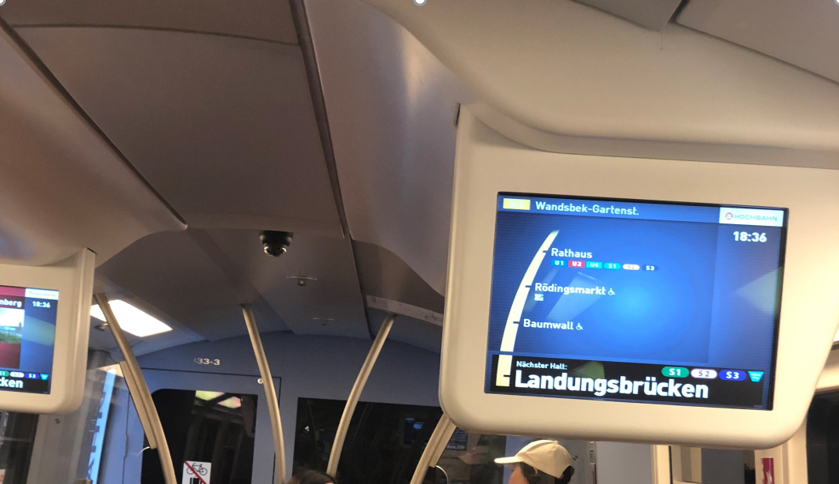
VISIT THE SECOND-LARGEST PORT IN EUROPE
The Port of Hamburg is the second-largest port in Europe, 106 kilometers from the open sea. The city is called the “Gateway to the World” by German citizens because of the vast trade volume facilitated by the port, including more than 9.73 million TEUs which pass through it annually. The city has 2,500 bridges (second only to New York), many of which connect portions of the Port to the City. In May 1189, Kaiser Friedrich Barbarossa decreed that the Port be a customs-free zone for all merchants. The Port includes many restaurants, live public music, and other entertainment. A Sunday morning visit to the Port should include the Hamburg Sunday morning fish market, “Hamburger Fischmarkt”, a massive weekly festival at the port that caters to both night owls and early risers. Take the S-Bahn/U-Bahn on either the purple S-3, the green S-1, or the yellow U-3 lines and get off at the Landungsbrücken station.
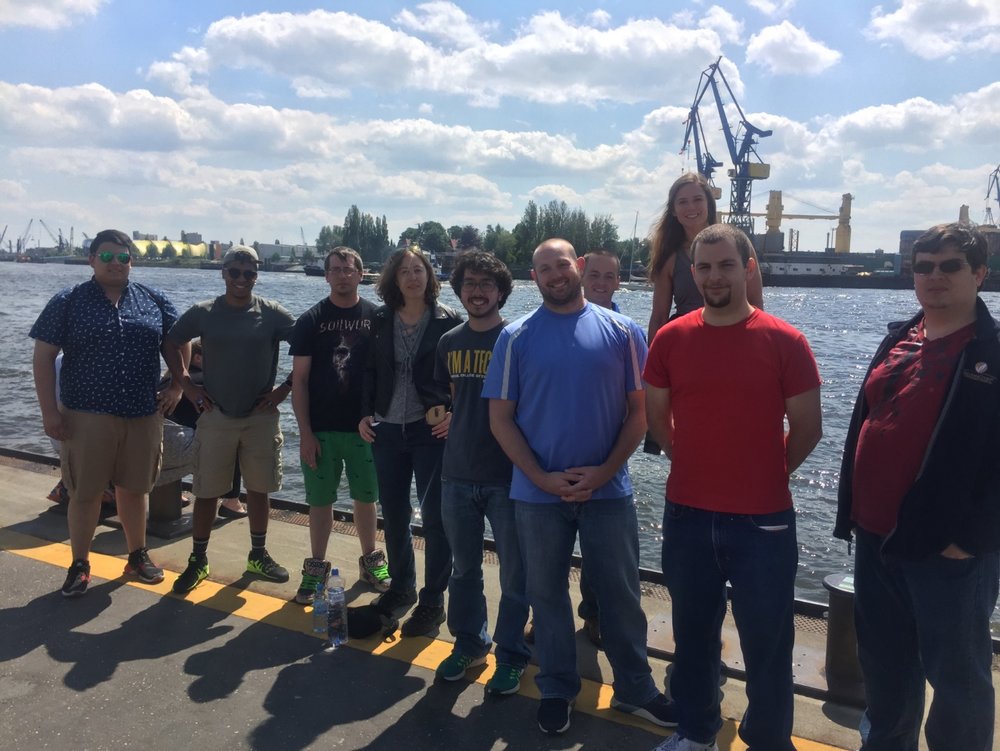
EXPLORE HAFENCITY
HafenCity Universitat has taken the lead in the urban planning of Hamburg, and there is no better way to experience it than a walking tour of the city (see below). The astute planning of the city center has resulted in great economic strength for the city. Hamburg is the global economic trading center of the North Sea and Baltic Sea regions and the regional hub of international trade (Hamburg Business Development Corporation, 2016), as well as being home to 40,000 official millionaires. A city walking tour may include Hamburg’s exclusive shopping district, Mönckebergstraße, a 600 meter-long exclusive urban promenade that is considered the European version of New York’s Fifth Avenue. It is the home of Europe’s largest Apple store and internationally renowned fashion names like Tiffany & Co., Gucci, and Louis Vuitton. Take the U-Bahn’s red U-2 or teal U-4 lines or the S-bahn’s green S-1 line or purple S-3 lines and get off at the Rathaus station.
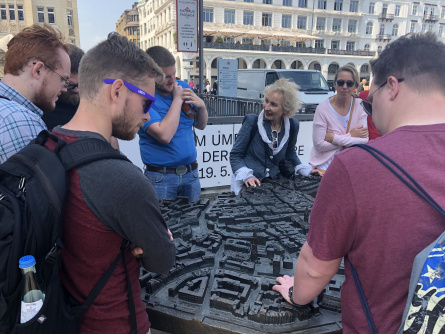
SEE THE TOWN HALL
Hamburg’s historic City Centre includes the neo-renaissance Town Hall (which the Chamber of Commerce now partially inhabits), which is home to the Senate and Parliament. Most buildings were destroyed by Allied air raids during the end of World War II, but this one was lucky to have only minor damage.
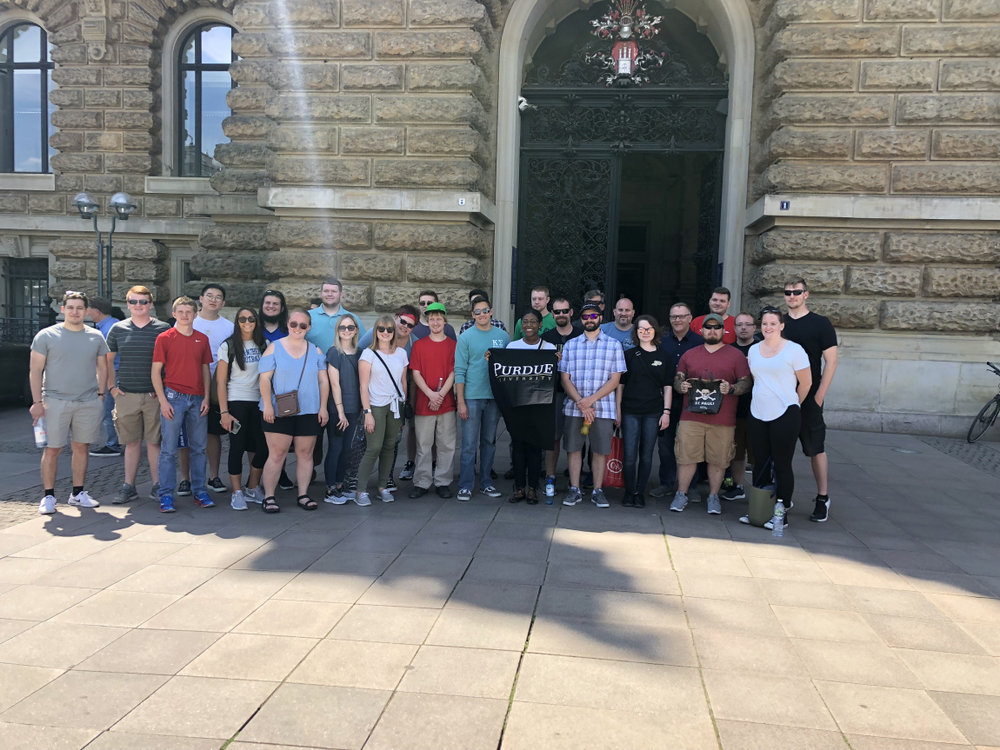
While in the Town Hall, take notice of the statue of Vanir, the Norse god of commerce and wealth which symbolizes the traditional Hamburg capitalist mindset. The photo below shows the Chamber of Commerce display of the Wapen Von Hamburg II, a 1722 warship that was commissioned to accompany the lucrative Hamburg merchant ships and defend them from pirates. During one voyage, pirates attacked the merchant ships that the Wapen Von Hamburg II protected. Admiral Berend Jacobsen Karpfanger was able to fend off most of the pirates while the merchant ships got away, and died in heroic fashion toward the end of the battle. His bravery in defense of Hamburg trade is legendary and is depicted in the Chamber of Commerce inside the Hamburg Town Hall.
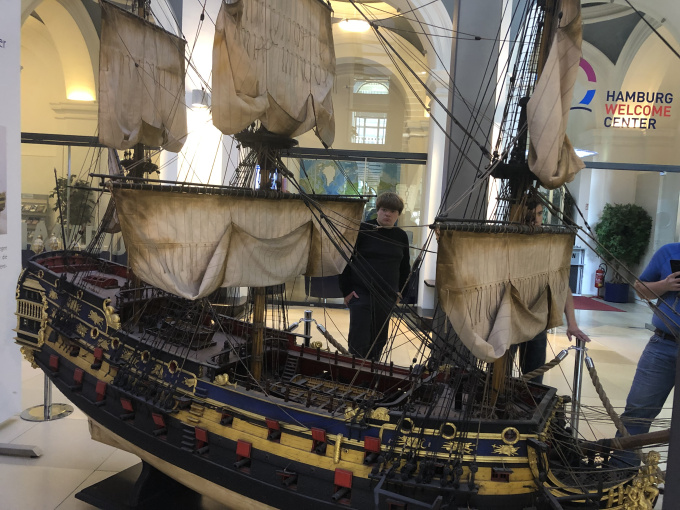
EXPERIENCE MUSIC HISTORY AT BEATLES SQUARE
A trip to Beatlesplatz or Beatles Square offers an opportunity to walk through the Hamburg Reeperbahn in the St. Pauli district, which many consider to be the continent’s version of the Vegas strip. This area stands in stark contrast to Hamburg’s city center and reflects a varied aspect of German culture. This is where the Beatles first toured and sharpened their musical skills and synergies from 1960-1962 before they became famous back home in Liverpool, England and soon thereafter worldwide.
After World War II, the Hamburg live music scene was thriving. The locals had grown accustomed to American rock and roll because of access to imported records available to buy locally via the Port of Hamburg. Citizens in Hamburg enjoyed and appreciated 1950s-style rock and roll artists such as Chuck Berry, Elvis Presley, and Little Richard, and these music fans were willing to pay to see the similarly-styled Beatles in their local clubs. The Beatles and the music scene in Hamburg were truly ahead of their time in the early 1960s. A bit more research can easily find notable live venues where the Beatles played many gigs. Take the U-Bahn on the yellow U-3 line and get off at the St. Pauli station or the S-Bahn on either the green S-1 or the purple S-3 lines and get off at the Reeperbahn station.
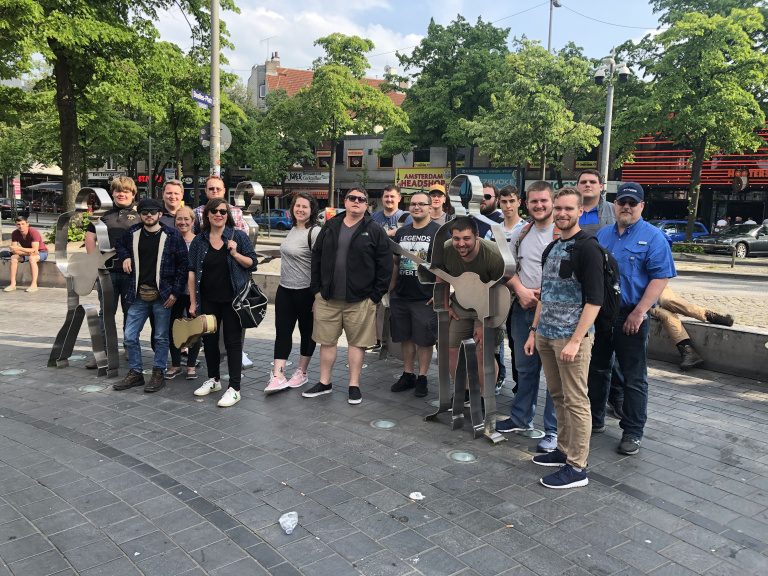
VISIT ST. NIKOLAI
St. Nikolai, a local cathedral built in the 12th century, was partially burned down during the Great Fire of Hamburg in 1845. This church was one of the five original Protestant churches in the city and was the world’s tallest building from 1874 to 1876. After being bombed in Allied air raids at the end of World War II, the only part left standing was the steeple. There is a small fee to climb the 75-meter high steeple and explore the memorial and the museum in the crypt area. Take the S-Bahn on the green S-1 line and get off at the Stadthausbrucke station.
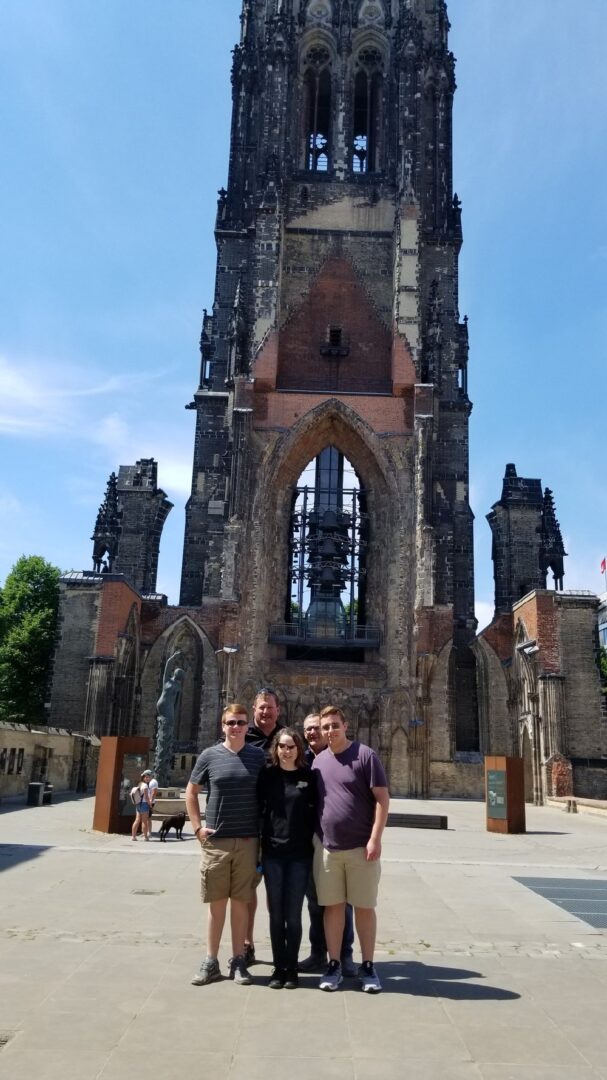
HIKE ALONG THE GREEN RING
The Harvestehude quarter along the beautiful Außenalster Lake, is amongst a series of buildings first constructed by the German elite of the 19th century. This area has recently experienced a green renaissance. The city encourages citizens to hike this area along the Green Ring, which is a sustainable initiative put forth by Hamburg leaders that connects the majority of the city’s parks, gardens, recreational areas, and other destinations via hiking/jogging paths (Mishkov, 2016). The goal is to make this area completely car-free by 2034 and to further promote public transportation. Take the U-Bahn on the blue U-1 line and get off at the Hallerstraße station.
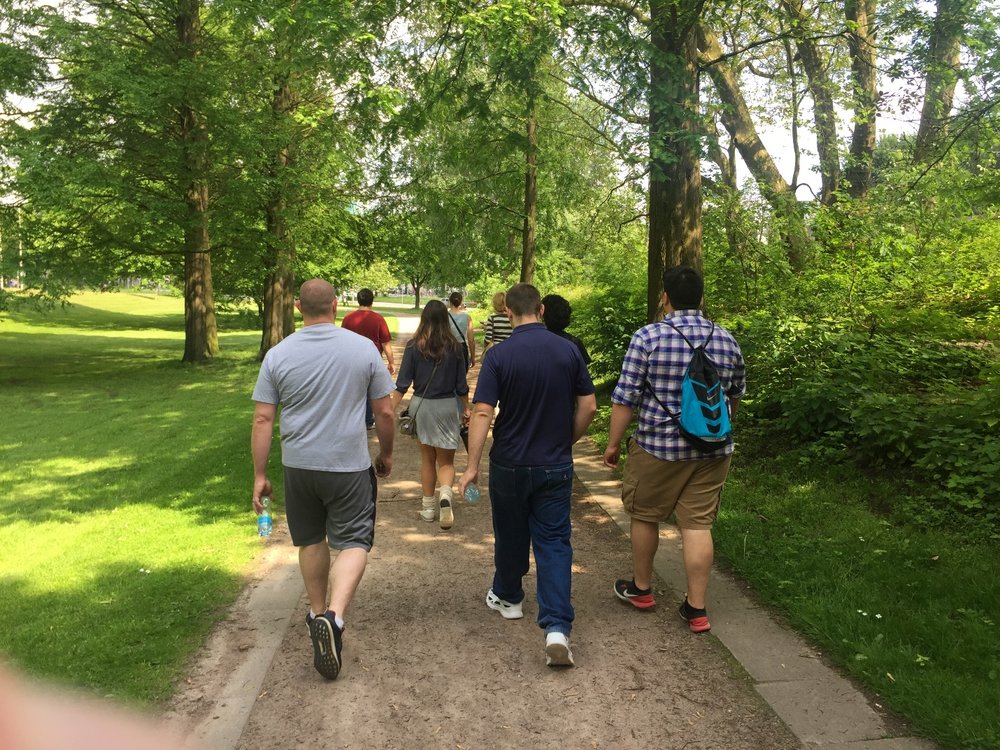
SEE THE WORLD’S LARGEST MODEL RAILWAY EXHIBIT
Miniatur Wunderland, the world’s largest model railway exhibit, is a major tourist destination in Hamburg. It features scale models of airports, concert venues, and hillside communities. Take the U-Bahn on the yellow U-3 line and get off at the Baumwall station.

Continue the journey through Central Europe with Jim! The final spot on his four part journey is Rotterdam, Netherlands. Click here to continue. See you in Rotterdam!
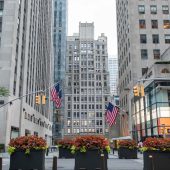
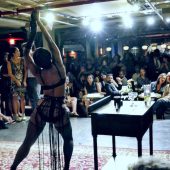









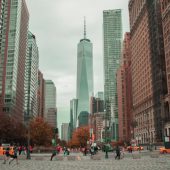
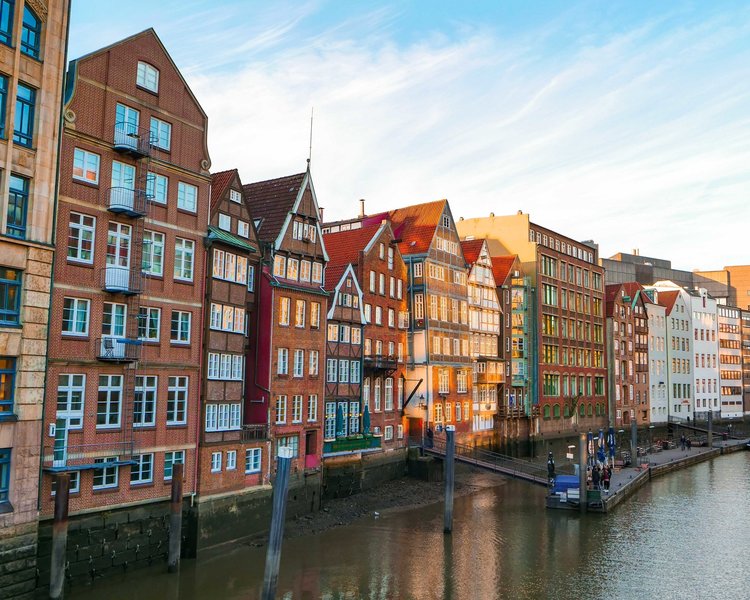
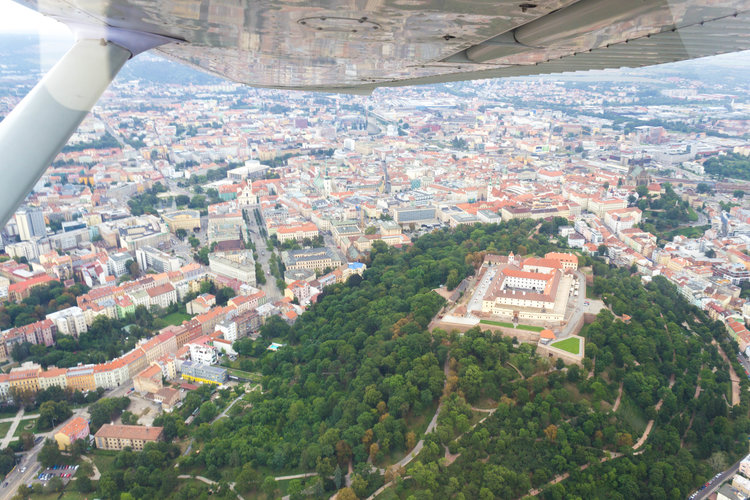


This site is protected by reCAPTCHA and the Google Privacy Policy and Terms of Service apply.